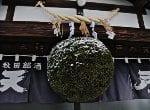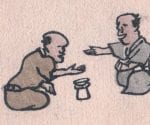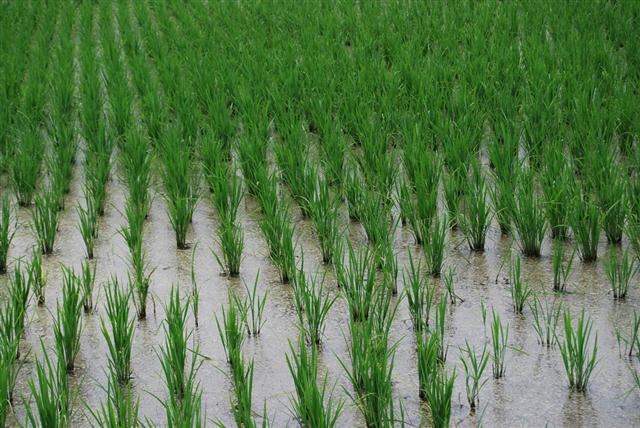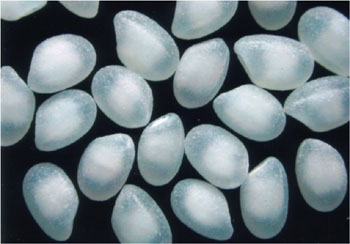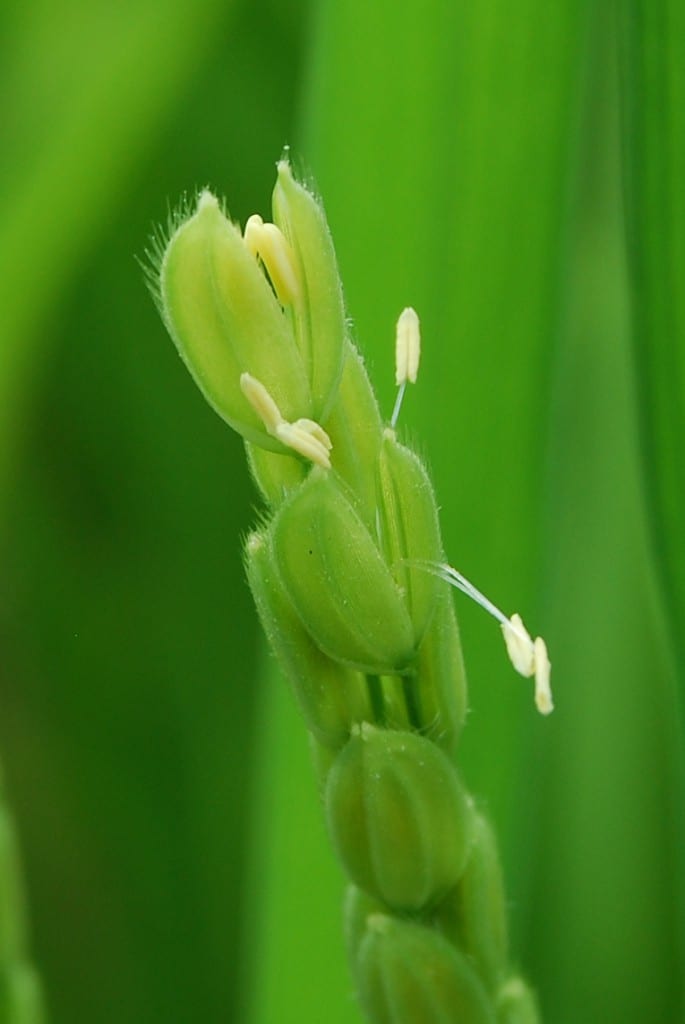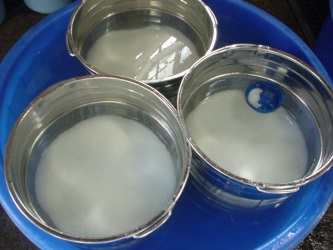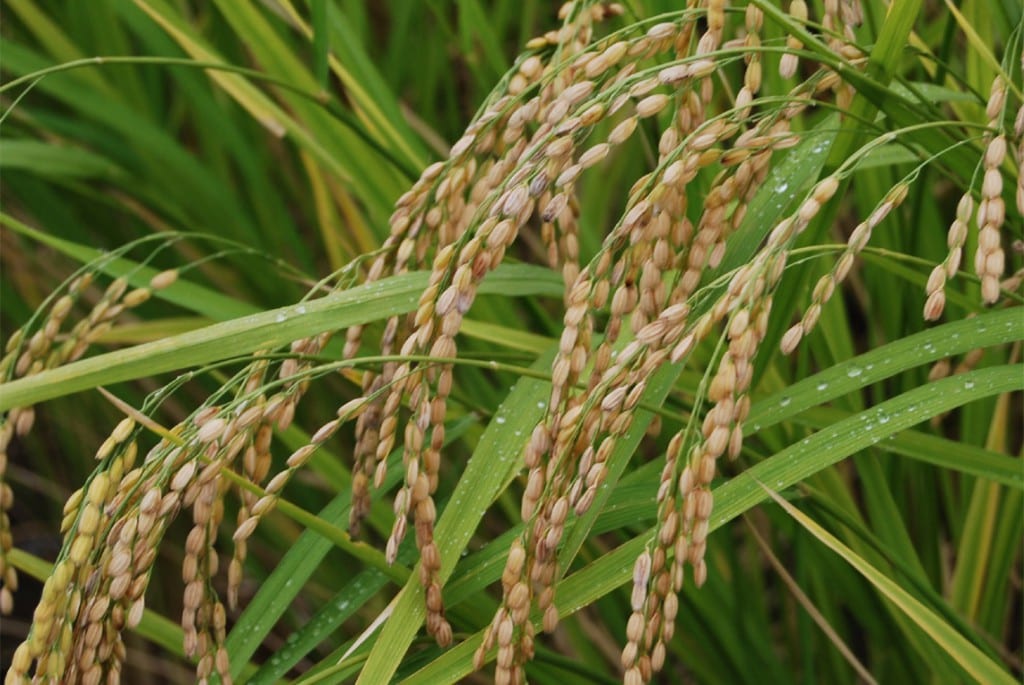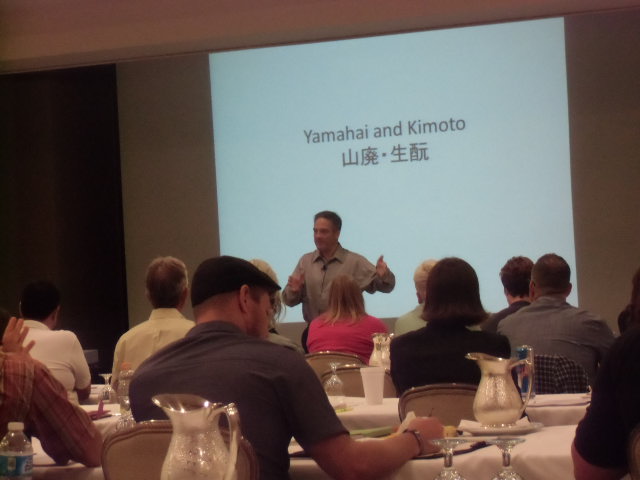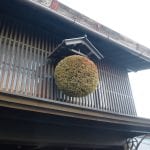 Along with the arrival of the season’s first sake comes the proliferation of sugidama. If you are in Japan, certainly you have seen these here and there, the large globes of tightly bound sugi (Japanese cedar, or more accurately, cryptomeria) leaves that are usually about 50cm ( 18 inches or so) in diameter, suspended by a cord in front of sakagura (breweries), sake pubs and sake retailers.
Along with the arrival of the season’s first sake comes the proliferation of sugidama. If you are in Japan, certainly you have seen these here and there, the large globes of tightly bound sugi (Japanese cedar, or more accurately, cryptomeria) leaves that are usually about 50cm ( 18 inches or so) in diameter, suspended by a cord in front of sakagura (breweries), sake pubs and sake retailers.
Sugidama are also known as sakabayashi, and originated in the Edo period (1604-868). Historically, they were hung out in front of sake breweries just when the first batch of sake is pressed each year. It’s a sign to local sake fans that says “Yeppir, the new sake is ready!” Over time, sugidama came to be used by sake dealers and sake-serving pubs to let customers know that “yes, indeed, sake can be found here, so shimmy on in and get some!”
The sugi (cryptomeria) tree holds religious significance in the Shinto religion, particularly in connection with O-Miwa Jinja in Nara Prefecture, which houses a deity of sake brewing. Traditionally, the leaves from the sugi on the grounds of this shrine were used to make all the sugidama for sake brewers everywhere. Or at least, so it has been said.
Sugi is used in many places in a sake brewery, and at many steps in the process. Until about 70 years 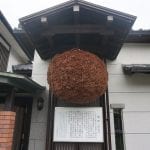 ago, tanks for sake brewing were made of sugi wood (now they are porcelain-lined steel), and in fact for the few batches made each year in wooden tanks, sugi is still used. The walls of the koji-making room are most often made of sugi, as are the trays and boxes in which the koji is kept as it goes through the 48-odd hour preparation process. Although one rarely seas wooden rice steaming vats anymore, those puppies too were made of sugi. And, once the sake is done, for centuries it was shipped in 72-liter casks called taru and then drunk from small single serving wooden boxes called masu. And – yes, you guessed it – both taru and masu are traditionally made from sugi.
ago, tanks for sake brewing were made of sugi wood (now they are porcelain-lined steel), and in fact for the few batches made each year in wooden tanks, sugi is still used. The walls of the koji-making room are most often made of sugi, as are the trays and boxes in which the koji is kept as it goes through the 48-odd hour preparation process. Although one rarely seas wooden rice steaming vats anymore, those puppies too were made of sugi. And, once the sake is done, for centuries it was shipped in 72-liter casks called taru and then drunk from small single serving wooden boxes called masu. And – yes, you guessed it – both taru and masu are traditionally made from sugi.
Although there are several stories, one says that if the leaves of sugi are dipped into a tank of sake, that sake will not go bad. But more practically, this wood is seen as best for protecting the sake from spoiling. But also, sugi is the one type of wood that does not impart a woody smell to the koji, or the moromi (fermenting mash), or the completed sake. Other wood varieties would make sake taste and smell woody, but sugi minimizes that effect.
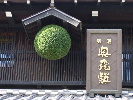 Back to the iconic sugidama: since they are made in late fall or early winter, the needle-like leaves are still green. Over the next several months, however, the green needles turn brown. Originally, it was said that when the color had changed to brown, the sake had aged enough to be optimally ready for drinking. So one would enjoy the hanging of a sugidama outside a brewer, and wait with great anticipation until it turned brown and the sake was ready to drink.
Back to the iconic sugidama: since they are made in late fall or early winter, the needle-like leaves are still green. Over the next several months, however, the green needles turn brown. Originally, it was said that when the color had changed to brown, the sake had aged enough to be optimally ready for drinking. So one would enjoy the hanging of a sugidama outside a brewer, and wait with great anticipation until it turned brown and the sake was ready to drink.
I recall a visit to a kura in Yamagata Prefecture named Kamenoi Shuzo, brewers of the sake Kudokijozu, 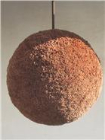 during which the president Mr. Imai pointed to a large sugidama hanging by the entrance. “See that, there? As you know, it should turn brown by the fall. Well, back in 1995, we had a sugidama that somehow miraculously stayed green; it never changed colors. While that alone was a mystery, that particular year the rice harvest was horrendous, and as such the sake that year was bad as well. Somehow, the sugidama knew the sake was never quite ready to drink, and so it never turned brown.”
during which the president Mr. Imai pointed to a large sugidama hanging by the entrance. “See that, there? As you know, it should turn brown by the fall. Well, back in 1995, we had a sugidama that somehow miraculously stayed green; it never changed colors. While that alone was a mystery, that particular year the rice harvest was horrendous, and as such the sake that year was bad as well. Somehow, the sugidama knew the sake was never quite ready to drink, and so it never turned brown.”
I dunno; stories like that kind of link sake to the rest of nature in a very cool way, one that almost makes veracity a secondary point.
Often, I have wondered how they were actually made. My inquiries were met with, “Well, ya just keep stuffin’ more and more sugi leaves in there, and trim it ‘till it’s round enough…” But only recently did I see a work in progress when visiting a brewery that was just about to press its first batch of the year.
In the old days, the experienced guys would ball up a bunch of boughs and stuff everything else into that. These days, many if not most use a ball of wire or styrofoam at the center. I was genuinely surprised to learn that it was that simple.
Although accounts differ subtly from source to source on the details, the above is the basic gist of the saga of the sugidama. But it has evolved in its use if not its symbolism. Today, sugidama appear not only in front of kura (breweries), but also in front of sake retail shops, as well as sake pubs and other places serving sake all over the country. A few are even found outside of Japan.
One of the most charming sites of winter – if you are into sake – must be a sugidama with freshly fallen snow resting on the top. If it doesn’t evoke an inner warmth, try viewing it with a glass of sake. It soon will.
~~~~~~~~~~~~
The next Sake Professional Course will be held April 23-25, 2019 in Chicago Illinois. You can learn more here, and make a reservation with an email to me at sakeguy@gol.com. Hope to see you there!





